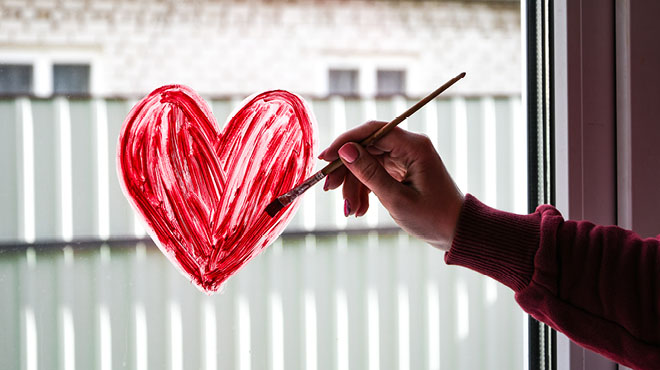Recent Posts
-

-
 Patient StoriesA lifesaver saved: An EMS veteran’s journey from rescue to recoveryNovember 14, 2025
Patient StoriesA lifesaver saved: An EMS veteran’s journey from rescue to recoveryNovember 14, 2025 -

Boost your brain with boredom

"Mom, Dad, I'm bored."
How many parents have heard this from children? It may make parents feel like they're failing, need to find something for the child to do or simply annoyed that children seem incapable of entertaining themselves.
Yet a little boredom for children and adults can be a good thing. It can simulate creativity and problem-solving, while giving the brain time to recharge.
Boredom basics
Why do people get bored? The feeling of boredom is when brains struggle to fill time. People may feel restless or have a lack of interest in their surroundings. Boredom is common, with over 60% of U.S. adults reporting that they feel bored at least once a week.
People's brains rarely are bored while focused on taking part in demanding tasks like work or school, or while taking part in a good conversation. When these activities are done, people experience fatigue and seek ways to entertain themselves and their brains.
Play and entertainment have been ways humans have figured out to overcome boredom. Adults read, spend time with hobbies or tell stories to avoid boredom. Before the advent of TV and mobile devices, children overcame boredom by going outside or playing with a friend or sibling.
Today, electronics capture a significant amount of people's attention. But this readily accessible medium may have swung too far in capturing people's attention. Instead of short-term relief from boredom, many people spend hours on electronics.
It's easy not to feel the passage of time while scrolling TikTok or watching YouTube videos. Quickly, an hour or two can pass without a person realizing it. For all that time spent, people don't necessarily feel refreshed. Rather, most people experience greater fatigue.
Consuming so much time on electronics lessens the amount of bored time, but also it causes a different problem. The less people experience boredom, the less equipped the brain is to deal with it.
Restoring the brain
When your brain is focused on an intense activity, it exerts a lot of energy. When you finish the activity, it returns to a default state. This is normal and the way that brains restore. The default state can be thought of as a resting state. Several interconnected brain regions are active during this time. These regions seem to act in unison as a connected network. This is referred to as the default mode network.
When people are in this state, many important things are happening in the brain. It's consolidating memories and reflecting on lessons learned. The brain plays through scenarios and applies what was learned and how it could be used in the future. People spend time thinking about themselves and others. They reminisce about the past and daydream about the future.
Developing creative solutions
The resting state also can be a creative time, and it can lead to finding creative solutions to problems that are bothering people. For example, many people claim to come up with great solutions to problems they are grappling with while in the shower. This is because their mind is free to wander while their body is engaged in a mindless task and captive to the task.
While in the shower, the person can't escape or play a game on a phone. The brain is thinking through something almost effortlessly and often coming up with solutions to problems that have been in the back of the mind.
Another example is when a person takes a nature walk. During this time, it's a safe and calming environment. Within the first five minutes, the person gradually gets used to the environment, reducing anxiety. The rest of the walk, the brain starts to rest and wander. When a new stimulus comes in, the mind identifies it but returns to a restful state. During this time, the brain is involved in creative thinking and finding interesting solutions.
Embracing boredom
Follow these tips to overcome the uncomfortable feelings of boredom:
- Balance activities with rest.
It's good to have a variety of activities that you enjoy, include socializing with others and are mentally stimulating. Yet rest time is important to recharge your brain. Seek a balance between structured activities and intermittent rest time to increase your creative thinking. - Try something new.
Join a club, try a new hobby, play a game, read a book or cook a new recipe to ignite your creativity and provide a distraction from boredom. - Get outdoors.
Spending time with nature is one of the best therapeutic ways to ward off boredom. It also promotes creative thinking. - Embrace curiosity and kindness.
This will get you more involved with the people and the world around you. - Embrace reminiscing.
Reminiscing is a big part of time spent as people age. It's normal and expected. If excessive reminiscing becomes a problem, try to channel focus on current or future goals and wishes for a few minutes.
Helping kids accept boredom
It's not parents' responsibility to entertain their children every moment of the day. Kids are naturally curious and creative. Being bored helps them strengthen their creative muscles and learn to cope with feelings of boredom as they get older.
If they protest boredom, acknowledge their feelings and ask them to come up with a solution. If they struggle, offer ideas that don't include an electronic device.
Boredom can be more uncomfortable or distressing for people feeling fearful, anxious or depressed. If this is the case, they should seek professional help to work through their feelings and develop healthy coping skills.
Don't be afraid of boredom. It's a normal part of life. Try not to dismiss or dislike it. Instead, try to view is as an opportunity to restore your brain and develop create solutions to problems.
By Mayo Clinic Health System staff.


